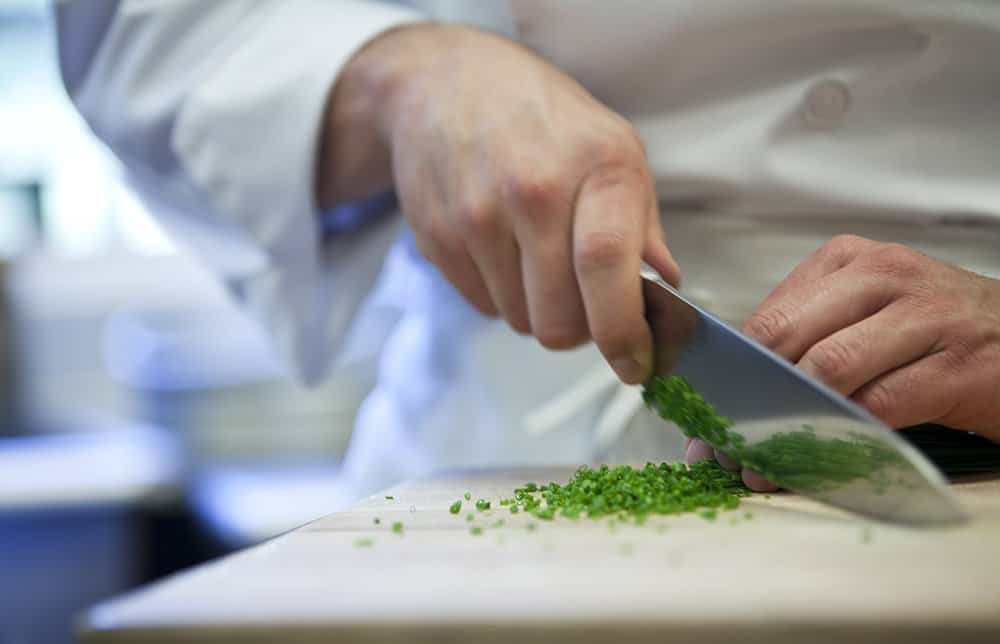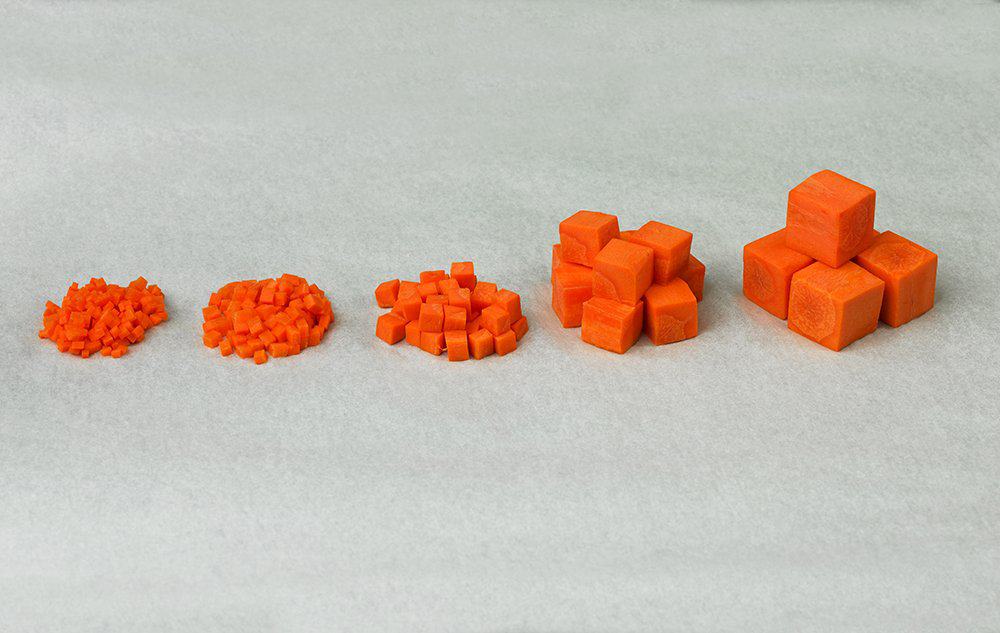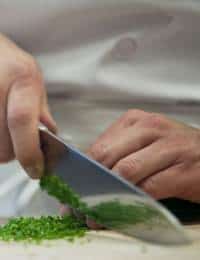
Knife skills are among the most important skills a cook learns. Good ones can save you time (by making you more efficient) and money (by reducing waste and enabling you to use less-expensive whole products rather than pricier prepared items). On the flip side, poor knife skills can put your fingers at risk!
So here we go:

#1—Sharpen them
A sharp knife is a safe knife. The knife sharpening process starts by creating a beveled edge using a sharpening stone. These stones, both water stones and oil stones, come in a variety of grits—coarse, fine, and many in between. To begin, hold your knife at a 22½-degree angle to the stone. Using light pressure, run the entire cutting edge of the knife from tip to heel along the entire face of the stone. For every 10 strokes on one side of the knife, repeat with 10 on the other. Start with a coarse stone and progressively work your way to a fine stone.

#2—Keep ’em sharp
The steel is a device that will keep a sharp knife sharper for a longer time by honing or evening out the microscopic “feathers” on a knife’s cutting edge. Using the same 22½-degree angle, stroke the entire cutting edge of the knife along the full length of the steel two or three times per side. If you do this every time you pick up your knife, you won’t need to visit the stone as often because the cutting edge will not round over and become dull.

#3—Prepare your work area
Increase your efficiency by laying out your work logically. Place your whole raw product on a tray on one side of your cutting board, and keep another tray for finished cut items on the other side. Have smaller containers for waste and usable trim handy as well. Usable trim (carrot ends, onion stumps, etc.) is great for fortifying a stock or sauce. Remember to keep some towels handy to wipe the cutting board in between foods, and always work with cooked or ready-to-eat products before raw ones.

#4—Use the right knife for the job
Approach smaller or more delicate items like garlic or tomatoes with a paring knife; its smaller straight blade gives you control and dexterity. Cut larger items with a chef’s knife, whose longer blade makes for cleaner slicing, and whose slightly curved, triangle-shaped blade and beefy handle offer leverage. To keep large, rounded vegetables like rutabagas or acorn squashes stable while cutting, make a small flat cut on one side so they rest firmly on the cutting board.

#5—Know your cuts
Many recipes call for “chopped” ingredients—what does this mean, exactly? Chopping refers to cutting vegetables into irregular but even-sized pieces. Use chopped vegetables for flavoring soups, stews, or sauces. Dicing is more precise: ingredients are cut into cubes that are consistent in shape and size. You’ll want to dice your vegetables when they’ll be a focal point of your dish. Mincing is a very fine chop often used for herbs as well as aromatics like garlic and shallots.

Bonus: Consider a mandolin
Making perfect precision knife cuts, such as the long, rectangular julienne, is a laborious task that requires patience and good hand-eye coordination. If you’d like an alternative, try a mandolin, a hand tool with a blade that will slice vegetables into varying widths, and teeth that crosscut the slices into juliennes in the same pass. All you need to do is peel, trim, and cut the vegetable to length. The goal when making precision cuts is consistency, so it’s fine if your juliennes are not exactly 1/8 inch as long as they’re uniform. Just remember the chef’s mantra, “If it looks the same, it cooks the same.”
By David Kamen ’88, manager of consulting projects for CIA Consulting, is a certified executive chef, ProChef Level III certified, and a proud alumnus of the college.
